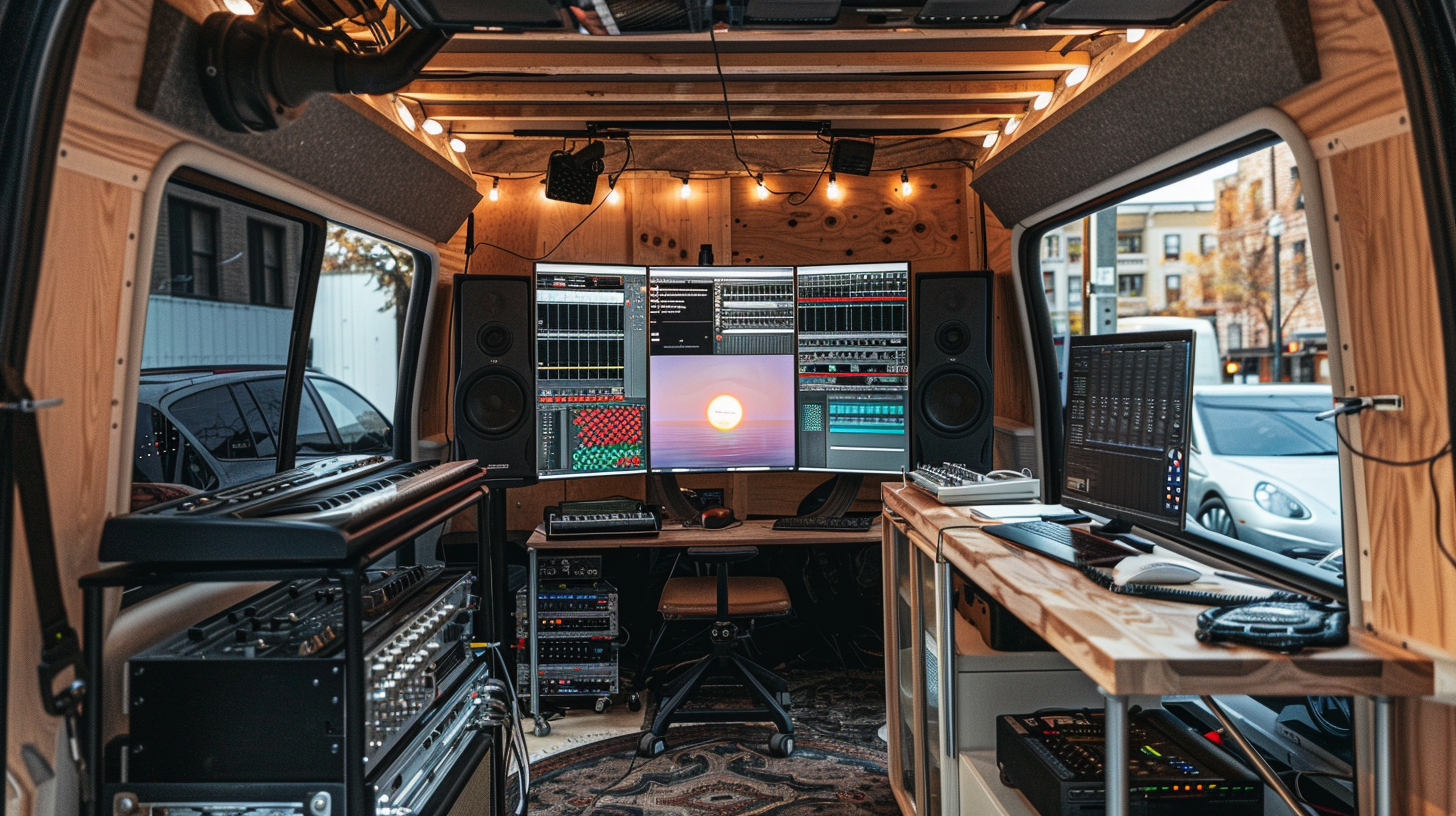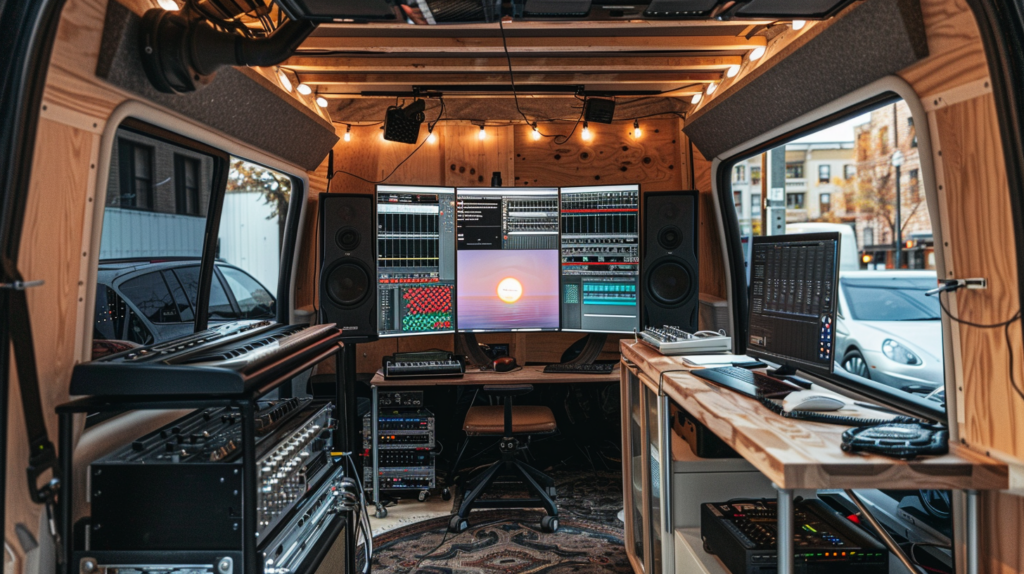
Table of Contents
Essential Components of a Portable Music Studio
A portable music studio must include both gear and treatment. The gear in any portable music studio is to create energy with our electronics. The objective in the treatment component of any portable music studio is to manage lower frequency pressures along with middle and high frequency reflections. The gear will include speakers, amplifiers, and the cables to connect them all together.
The treatment must focus on the absorption of lower frequency pressures along with managing reflections from the existing room surfaces. A portable music studio’s goal is to be able to mix the sound from multiple sources into a coherent presentation that is mostly music and not room sound.
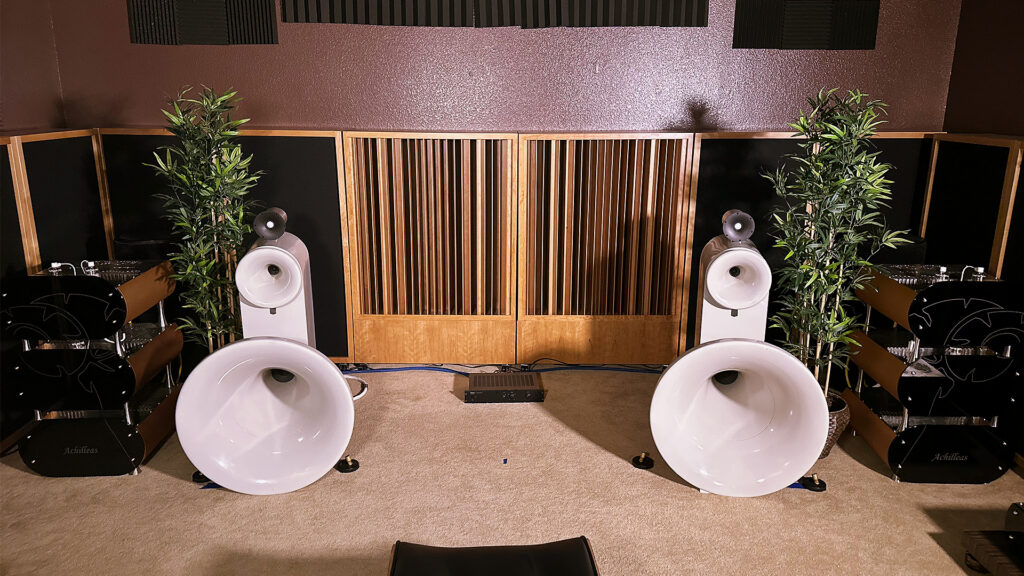
Portable Acoustic Treatment Solutions
A portable music studio must have treatment types that can be easily moved and positioned in certain settings. The treatment must be powerful and portable. It must be in modules that can be stacked or panels that can be easily positioned. Lower frequency sound absorption technology is heavy. It has to have mass in order to be effective.
It must be able to create a “room” around the gear so that the sound of the room is not heard. At Acoustic Fields, we have our Carbon Panels which represent a larger surface area in each unit. For smaller applications we have our cube technology. Let’s examine both forms to see what would be a better fit for your portable music studio.
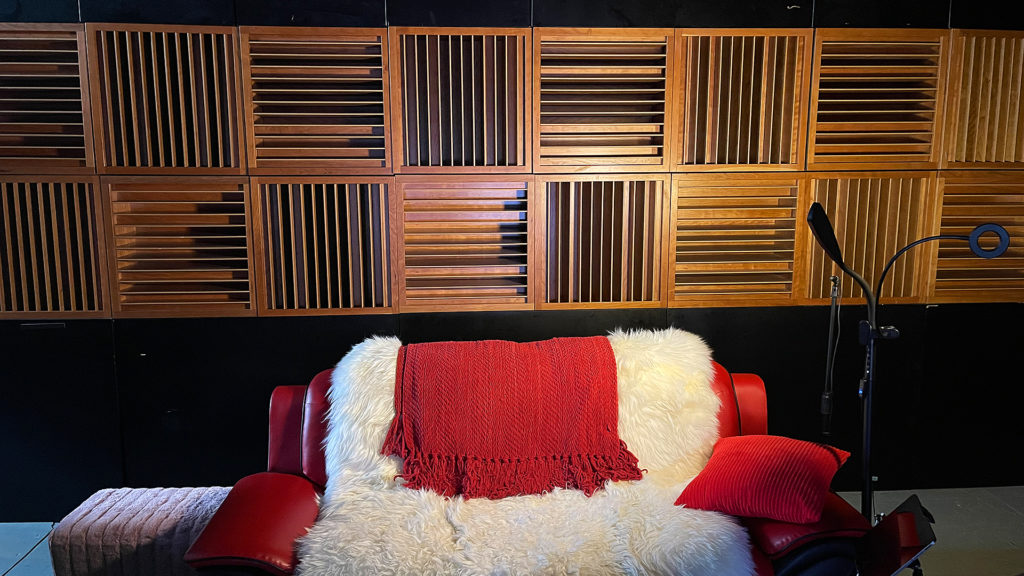
Carbon Panels for Effective Sound Management
Our Carbon Panel is designed to work from 40 – 6,300 hz. It is a broadband absorber that treats both low frequency pressure issues along with middle and high frequency reflections. The unit is on casters or wheels. It can be positioned around the gear to form a new music room. Behind the fabric is our foam technology for middle and high frequency absorption.
Inside the cabinet is our carbon technology for lower frequencies. Another option to consider is our CPA unit. Our ceiling perforated absorber is 6″ deep and can be positioned around your portable music studio. It will not go down to 40 hz. However, it will start working at 65 hz. Our CPA units are 48″ x 6″ x 72″ and will stand on their own.
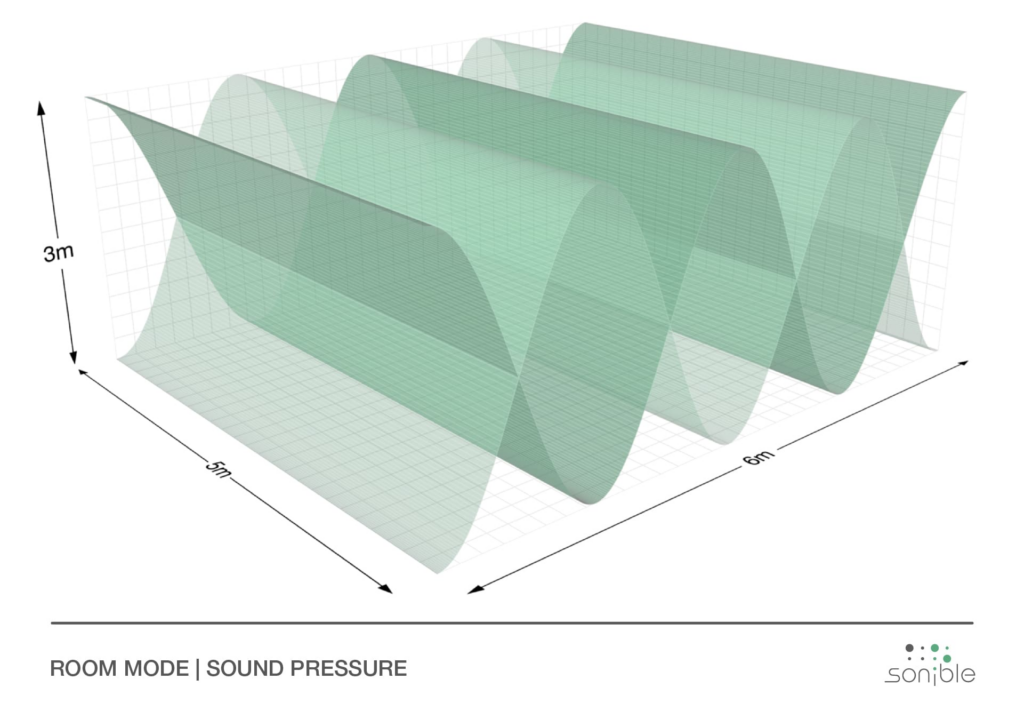
Ceiling Perforated Absorbers for Flexible Treatment
The goal of any portable music studio must be to make a frequency response friendly environment around the gear, especially the speakers. We must be able to hear all the frequencies that are represented in our source recordings or our playback set up. We want to hear the direct energy from our speakers. That is the straight line energy from your speakers to your ears.
The straight line or direct energy is free from wall reflections. Wall reflections are termed room sound or specifically reverberation. Reverb is defined as to how long a sound stays around within the room after it has sung, spoken, or played. Reverb is room distortion that has an audible impact on what we hear. We want a balance between room sound (distortion) and the direct wanted energy from our speakers.
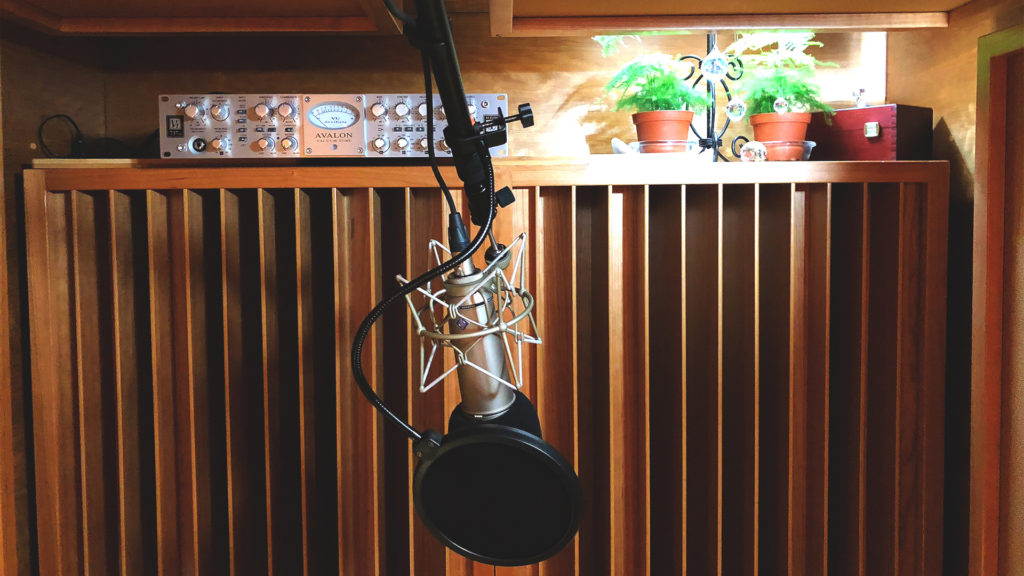
Creating a Frequency Response Friendly Environment
A portable music studio must create a frequency response friendly environment around your digital audio workstation. The best way to achieve this objective is to “build” a new room around your DAW. You will not use a hammer and nails. You will use panels that are tuned to the frequency and amplitudes of your issues around the DAW. Your acoustic goal is translation.
You want to be able freely to hear all musical and vocal content. You want to hear what the singer had for breakfast. The straight line or direct energy from your speakers contains this data. The room will also impose its own fingerprint by throwing reflections at your ears from the room. This is a room sound which is distortion. We will use panels to shield ourselves from the room.


